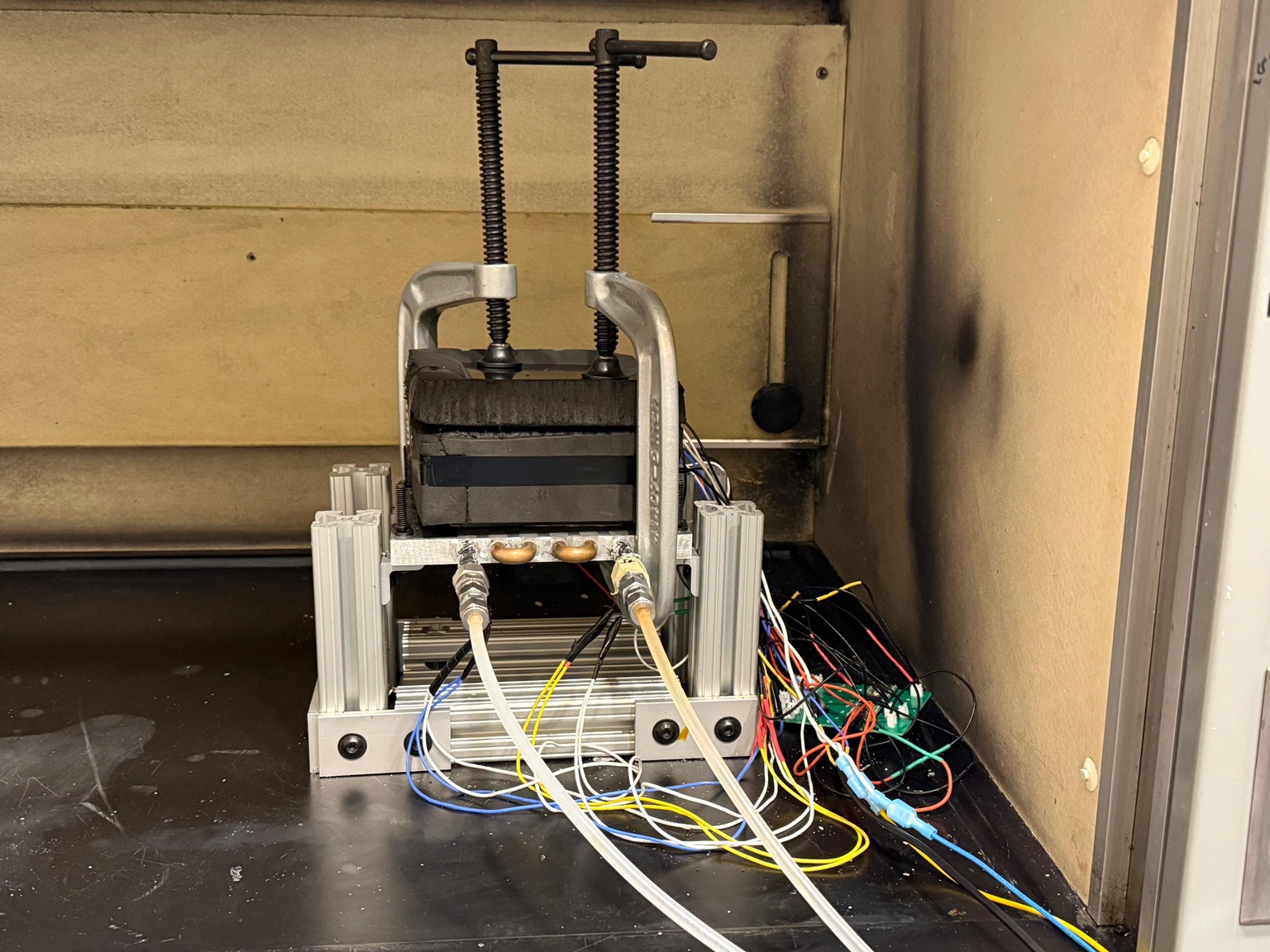When University of Maryland physics major Dhruv Agarwal first learned about phase change materials—substances that maintain stable temperatures in extreme conditions—in his freshman year, he never imagined the concept would eventually take him to the stars. Now a junior, Agarwal uses his expertise in the subject to lead a team of 20 undergraduates building technology that NASA might one day launch into orbit.
 Dhruv Agarwal As a project lead for UMD’s Satellite Component Fabrication (SatFab) team, Agarwal oversees one of the most ambitious undergraduate student-led projects on campus: constructing a complete CubeSat from scratch. About the size of a small loaf of bread, SatFab’s mini satellite will house cutting-edge thermal management technology that could revolutionize how spacecraft handle the extreme temperatures of space.
Dhruv Agarwal As a project lead for UMD’s Satellite Component Fabrication (SatFab) team, Agarwal oversees one of the most ambitious undergraduate student-led projects on campus: constructing a complete CubeSat from scratch. About the size of a small loaf of bread, SatFab’s mini satellite will house cutting-edge thermal management technology that could revolutionize how spacecraft handle the extreme temperatures of space.
“CubeSats are small satellites used to carry out Earth observation tasks, perform technology demonstrations or carry experimental payloads,” Agarwal explained. “Our team’s CubeSat is a 3U—meaning a 10-by-10-by-30-centimeter satellite—that will perform the latter two tasks. It’ll have a completely in-house GPS and a novel phase change material-based thermal control system that we designed. We’re hoping to launch our CubeSat through NASA’s CubeSat Initiative, which will send CubeSats to the International Space Station before releasing them into lower Earth orbit.”
Building tomorrow’s satellites today
Agarwal’s journey to satellite engineering wasn’t a straightforward one. Space technology wasn’t even on his radar until he was able to work on a phase change material experiment in 2023 with Aerospace Engineering Senior Lecturer Eric Silk, a faculty advisor for UMD’s Students for the Exploration and Development of Space (SEDS) campus organization. For Agarwal, the opportunity—and a SEDS recruitment email—instantly kick-started his multiyear adventure with space tech. Phase change material experiment.
Phase change material experiment.
“I never had an interest in engineering or space, but I am interested in figuring out how things work, which is why I decided to pursue physics,” Agarwal said. “My experience of working with Dr. Silk and my team on the SatFab project ignited my passion for space tech. In turn, I had the chance to apply my knowledge of physics principles in a meaningful way.”
Working from the ground up, the SatFab team are designing and building every component of the CubeSat, including its exterior shell, communication system, custom-made GPS and novel thermal energy storage system. Agarwal led the team’s efforts in developing the thermal control system, which was designed to be simpler, less expensive and less energy-intensive than existing cooling mechanisms currently used in satellites.
“Phase change materials are substances that store and release large amounts of energy when they transition between different states, like ice melting into water,” Agarwal explained. “We developed a system that uses this principle to regulate satellite electronics temperatures.”
Agarwal noted that as phase change material on the CubeSat absorbs heat (like when the satellite is in sun-view) and transitions from solid to liquid, it maintains a steady temperature even as it stores excess energy. When temperatures drop (such as when the satellite is in Earth’s shadow), the material solidifies and releases the stored heat back to the satellite’s electronics. This special design allows electronics to be kept in their operating temperature range while minimizing fluctuation, thereby ensuring the satellite’s optimal performance and extending its longevity.
Developing a working prototype wasn’t easy, Agarwal admitted. With guidance from Silk, the SatFab group also had an overwhelming amount of freedom to architect their experiments despite initially not having the expertise or experience to do so. They learned on the job, designing and redesigning experiments and vigorously testing each component.
“By developing our systems in-house and making them open source, we hope that we’re laying the ground for future student projects,” he said. “It’s an ongoing project that everyone contributes to.”
Reaching new heights
The SatFab team is already working with partners like aerospace firm Amphenol CIT to ensure that the satellite meets professional reliability standards. Agarwal anticipates that the CubeSat’s components will soon be able to be tested via balloon payloads to simulate flight conditions.
This semester, Agarwal plans to draft his team’s NASA CubeSat proposal, write the final research manuscript for CubeSat’s thermal control system project, and prepare to present it at the 2026 American Institute of Aeronautics and Astronautics’ SciTech Forum in January. He expects for the team’s CubeSat to launch in late 2027 or early 2028.
“Our work was recently accepted for presentation at SciTech, so I’m excited to enter the next phase of the project. We’ve made a lot of progress, but there’s still a lot more to be done,” Agarwal said. “We need more students with a passion for problem-solving on our team than ever, especially those with physics and engineering backgrounds.”
As a physics major, Agarwal never thought he’d lead a team of engineers or perform administrative tasks like budget or resource management but now sees the experience as invaluable and applicable to any lab or office. He hopes that other physics majors will look to explore less traditional paths as he did—and discover a new way to grow and achieve success.
“I’m incredibly thrilled at the prospect of our experiment possibly being launched into space, especially because we’re all undergraduate students,” he added. “The fact that my team’s work can culminate in something so fantastic and actually create a lasting contribution to space engineering is something I’ll always remember.”
Written by Georgia Jiang